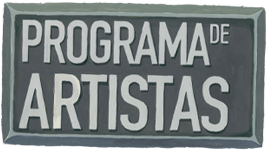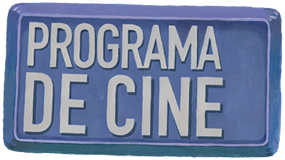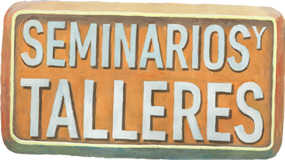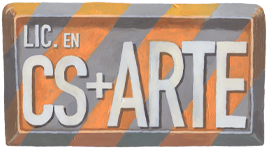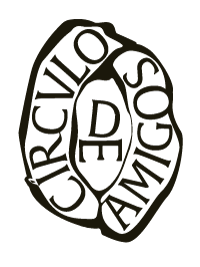MATERIAL IRRITADO: una conferencia de Lars Bang Larsen
Martes 8 de septiembre, 19h
IMPORTANTE: La conferencia será en idioma inglés sin traducción
Material irritado
Contrariamente a la connotación común
del término “irritación” como algo fugaz y dependiente del estado de ánimo, un
no-evento, algo inconsecuente y como mucho, un mero síntoma, en ámbitos
científicos el término “irritación” refiere a algo positivo y fundamental. En
la obra de Albrecht von Haller en el siglo XVIII, así como en la de Erwin
Schrödinger y Norbert Wiener en el siglo XX, “irritación” e “irritabilidad”
definen umbrales de la vida misma, fenómenos de la vida fundamentales.
Incluso si, científicamente hablando, el
término ha quedado de alguna manera viejo, la idea de “material irritado”
todavía puede ser útil cuando es aplicada a la práctica artística o a su
análisis. Con una ambigüedad que va en contra de las aproximaciones y términos
afirmativos, la podemos usar para manifestaciones artísticas que están ligeramente
desdobladas. Bajo este
encabezado podemos encontrar obras de arte borderline
o subterráneas, situadas en los bordes de la historia del arte, o en las
fronteras de lo que es propiamente arte. Uno podría, en esta línea, sugerir una
relación densa entre el arte y el campo cultural y subjetivo. Un arte que
enfrenta problemas en el mundo social, pero es a la vez escéptico de sí mismo,
puede aparecer ansioso y volátil, así como positivamente crítico.
En esta conferencia, se incluirán
ejemplos de exhibiciones curadas por Lars Bang Larsen (A History of
Irritated Material (Historia de un material irritado), 2010, y Reflections
from Damaged Life (Reflexiones desde un mundo dañado), 2013), así como de
obras de arte y proyectos como Estruturaçao do self (Estructuración
del ser) (1976-88) de Lygia Clark, o The Little General (El pequeño
general) (1967) de Öyvind Fahlström.
Lars Bang Larsen es escritor, curador e historiador del arte. Es profesor invitado en la Alta Escuela de Arte y Diseño de Ginebra, e investigador postdoctoral de la Universidad de Copenhague (Departamento de Artes y Estudios culturales), donde también obtuvo un doctorado por su estudio sobre conceptos psicodélicos del arte de la neo-vanguardia. Ha organizado exposiciones como A History of Irritated Material (Raven Row, Londres, 2010), The Society Without Qualities (Tensta Konsthall, Estocolmo, 2013), y Reflections from Damaged Life (Raven Row, Londres, 2013). Entre las muestras de las que fue co-curador, se destacan Populism (Stedelijk Museum, Frankfurter Kunstverein y otras instituciones, Amsterdam, Frankfurt, Vilna, Oslo, 2005), La insurección invisible de un millón de mentes (Sala Rekalde, Bilbao, 2005), y Believe not every spirit, but try the spirits (Monash University Museum of Art, Melbourne, 2015). Fue el curador de la participación danesa en la 26ª Bienal de San Pablo, 2004, y actualmente es parte del equipo curatorial que prepara la edición número 32 de la misma, que tendrá lugar en el año 2016. Sus últimos trabajos publicados incluyen The Model: Palle Nielsen’s ‘A Model for a Qualitative Society’, 1968, (MACBA, 2010); Networks (Whitechapel Gallery, 2014); y The Phantom of Liberty. Investigations in the Pedagogical Paradox (co-editado con Tone Hansen, Sternberg Press, 2014). En 2015 publicará su primer libro en castellano, Arte y norma (Cruce Casa Editora), en el que se reúnen sus ensayos más recientes. Vive y trabaja en Copenhague.
_Imagen: The Little General (El pequeño
general) (1967) de Öyvind Fahlström_
| Versión en inglés |
Irritated material Contrary to everyday associations of irritation as something fleeting and mood-dependent – a non-event, something inconsequential and at best a mere symptom – scientific discussions have privileged it as positive and fundamental. From Albrecht von Haller in the 18th century to Erwin Schrödinger and Norbert Wiener in the 20th, irritation and irritability define thresholds of life itself, a fundamental life phenomenon. Even if it scientifically speaking may be somewhat timeworn, the idea of irritated material still has something going for it when applied to artistic practice and our readings of it. With an ambiguity that goes against the grain of affirmative terms and approaches, we can use it for art that is slightly beside itself. Under this heading we may find art works that are borderline or subterranean, sitting at the edge of art history, or at the boundary of art proper. One can in this way suggest a charged relationship between art and the subjective and cultural realms. Art that confronts problems in the social world, but is also sceptical towards itself, can appear anxious and volatile as well as positively critical. In the lecture I will include examples from exhibitions I have curated (A History of Irritated Material, 2010, and Reflections from Damaged Life, 2013) as well as from art works and projects such as Lygia Clark’s project Estruturaçao do self (1976-88) and Öyvind Fahlström’s The Little General (1967). |

